
To maximize rural prosperity in tandem with greater equity for rural people and places, rural advocates must be in better sync and not work at cross purposes. Rural single-issue and proprietary interest groups need to learn more about and from each other, share resources and expertise across their fields and niches, recognize the interconnectedness and interdependence of their issues and develop mutual respect, and learn about how their individual efforts help or harm other rural interests.
Developing and aligning a basic common agenda, focused on a healthy balance of prosperity and equity outcomes, along with increased cross-promotion of each other’s work, will propel both individual and collective progress.
Building Block EVIDENCE
Evidence suggests that this building block is important because developing a common language around equity and understanding how structural and institutional inequity within the collective effort must be addressed is part of creating change.1 Kania and Kramer describe that a collective impact framework for creating community change includes five conditions: “a common agenda, shared measurement systems, mutually reinforcing activities, continuous communication, and backbone support organizations”2 and should also pay “vigilant attention” to equity.1 Other experts support the collective impact framework for addressing complex issues—those with multiple root causes, multiple players, and without a “direct line between an intervention and a result”—and note that a distinction of the framework is to use data intentionally “and as a driver toward innovation and results”.3 However, barriers to implementation of the framework include short-term funding focused on outcomes for individual organizations; “the need to get credit for collaborative work; and internal organizational structures that have a low tolerance for risk”.3 Research on collaboration among rural nonprofits also notes the same barriers to success, as well as the negative effects of structural racism and segregation on collaborative relationships.4
Foundational research on rural collaboration notes that federal or state initiatives often require or encourage collaboration between organizations, recognizing its potential value.4 However, limited public sector resources may lead to collaboration to be more “tactical” than strategic—for example, local government managers explain that collaboration must produce enough benefit to offset work to identify collaborative opportunities, create structure, and promote relationships—with state or federal action needed to address larger issues, like local collaborators’ fiscal stability.5 Research on collaboration among rural economic development organizations in rural Eastern Kentucky suggests organizations view collaboration as more successful with organizations that are similarly positioned with the collaborative network and with whom they have shared trust, norms, and mutual dependence.6 Researchers also call for more exploration into the tension between collaboration and competition in local contexts.6 A rural case study from the Western US illustrates these tradeoffs and tensions, noting that rural networks may be underpinned by deep personal trust, mitigating intracommunity competition and increasing efficiency in some collaborative processes.7 As rural networks may rely on a “small cadre of influential leaders,” suggested strategies to maintain successful cross-sector collaborations in rural settings include recruiting and retaining talented leadership from outside the network and looking to diverse and intergenerational pools of community members when experienced leadership departs.7
The Thriving Together initiative in Phoenix, Arizona, which aims to improve student educational outcomes, is an example of equity-focused collective impact work.1,8 Other examples of collaborative community action in rural settings include Resilient Southern Illinois, an initiative of Partnership for Resilience9 and Communities that Care Coalition, in Massachusetts.10
Curated Resources for aligned rural fields & Actors
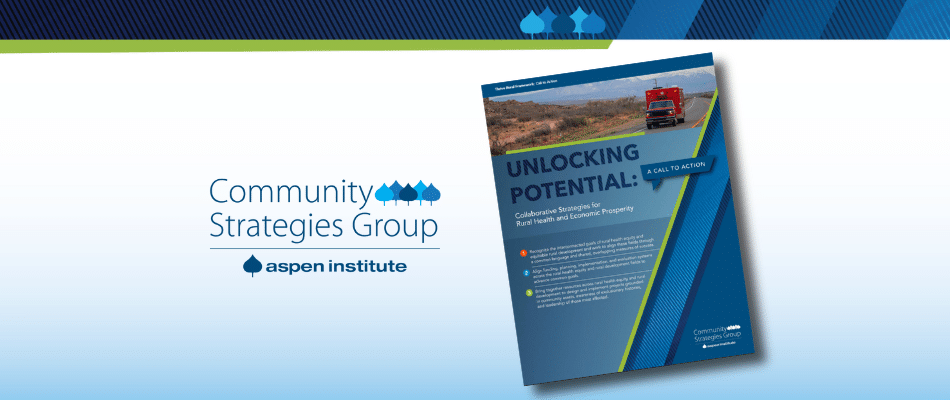
Collaborative Strategies for Rural Health & Economic Prosperity
Insights and recommendations to do rural development and rural health differently—moving collectively toward equitable rural development with projects grounded in place and a people-centered vision of community impact.

How To Organize a Rural Action Infrastructure
Discussion with rural leaders about working together across interests and regions to take advantage of opportunities.
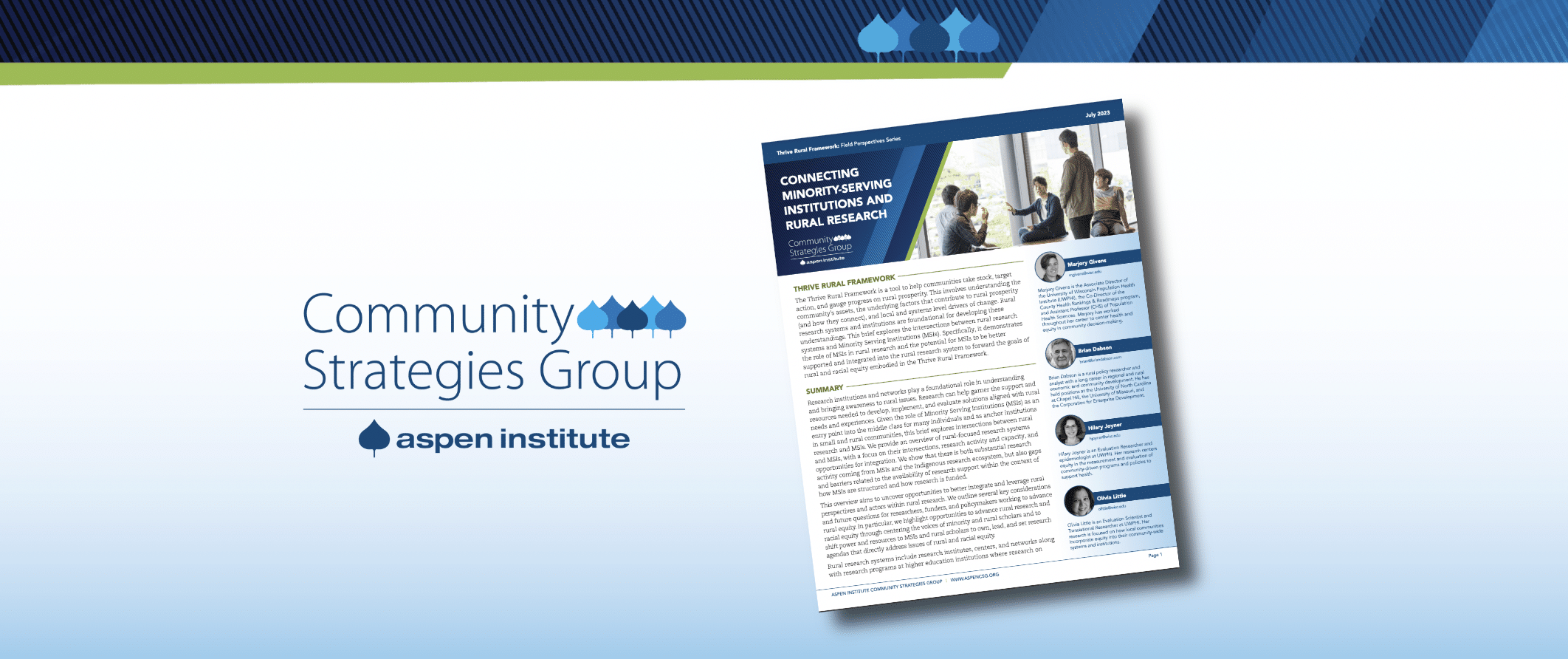
Building Trust With Community-Based Participatory Research
This research brief explores how rural MSIs and approaches to community-based participatory research can be used to better understand MSIs’ nature and practices.
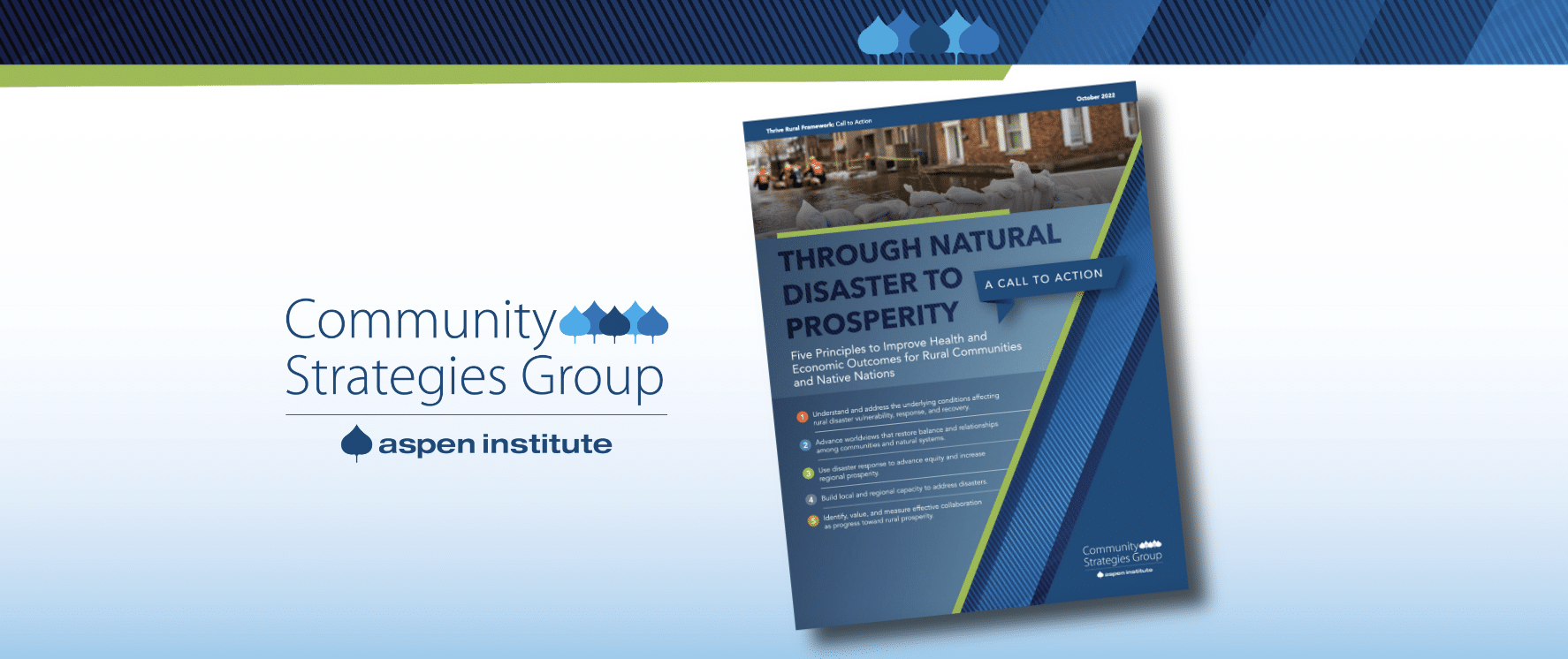
Through Natural Disaster to Prosperity: A Call to Action
Need actionable steps in your equitable disaster preparedness or recovery work? This report highlights best practices from the field.
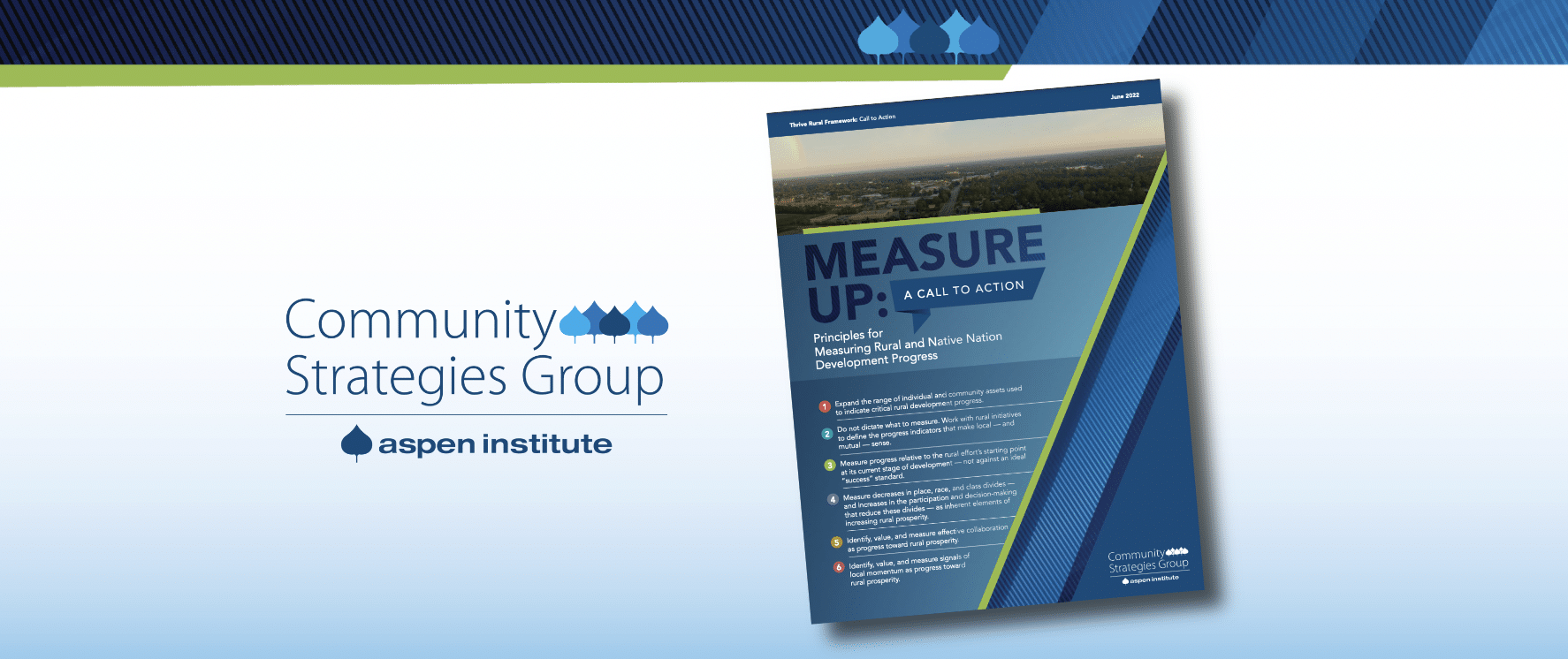
Measure Up: A Call to Action
Today, we have a generational opportunity to strengthen prosperity and equity in communities and Native nations across the rural United…
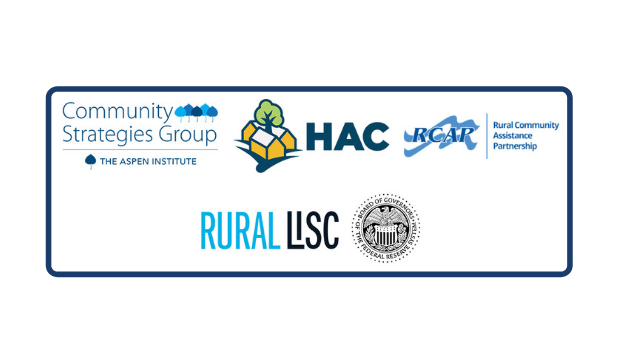
Rural Field Leaders Drive Critical Conversations
Setting the scene: Over eight hundred people in the virtual room, watching and listening, sharing resources in the chat, and…
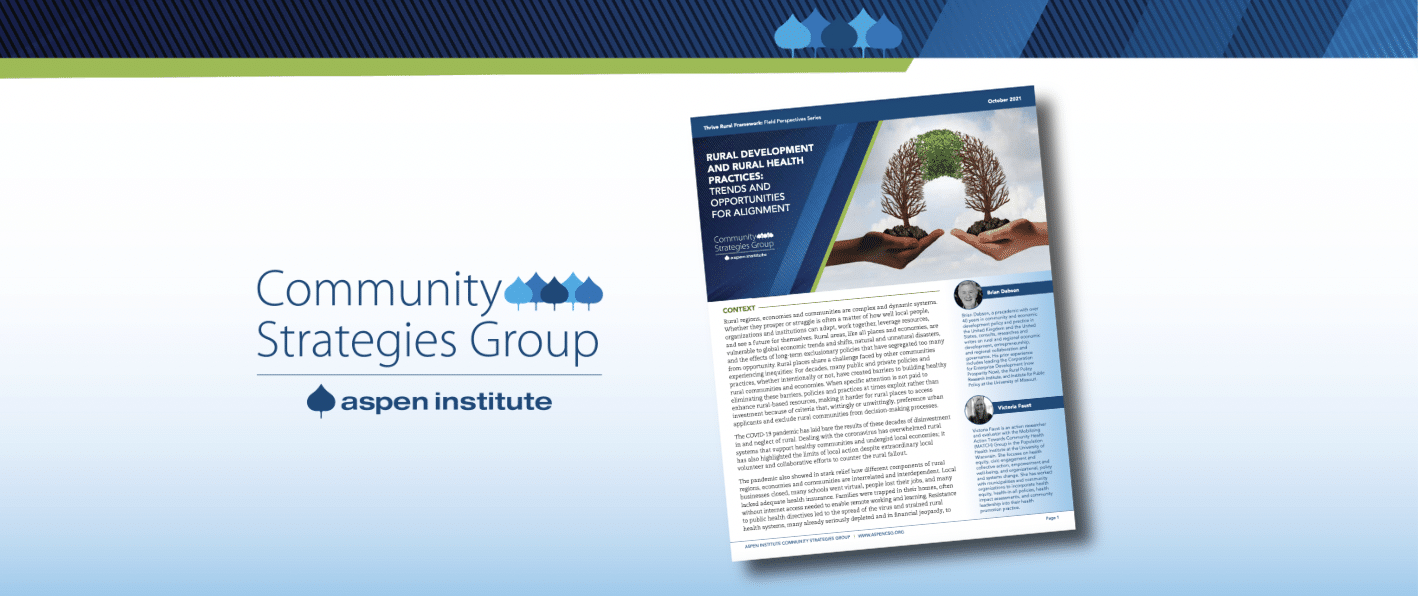
Rural Development & Health Alignment Opportunities
This first in the Thrive Rural Field Perspective Series describes the main trends and catalysts for change that emerged from…
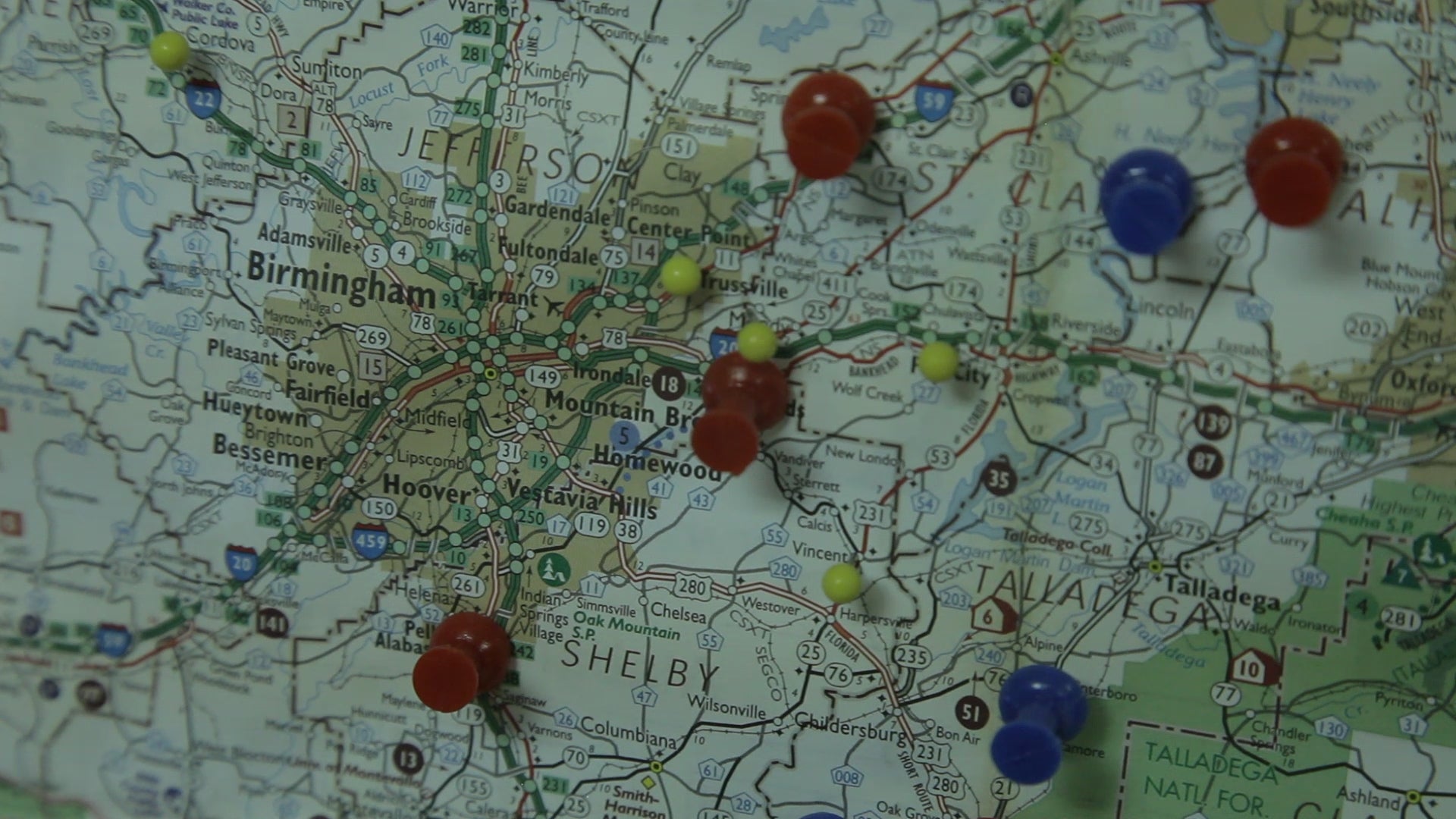
Building Better Fundamentals for Rural Progress
Sector-specific solutions dominate rural policy. We often hear about rural health, rural water, rural housing, broadband, agriculture. These are pieces…

Why Advocates for Rural Health and Health Equity Should Work Together
Rural health disparities are well documented, as are racial and ethnic health disparities (Agency for Healthcare Research and Quality 2020). Evidence…
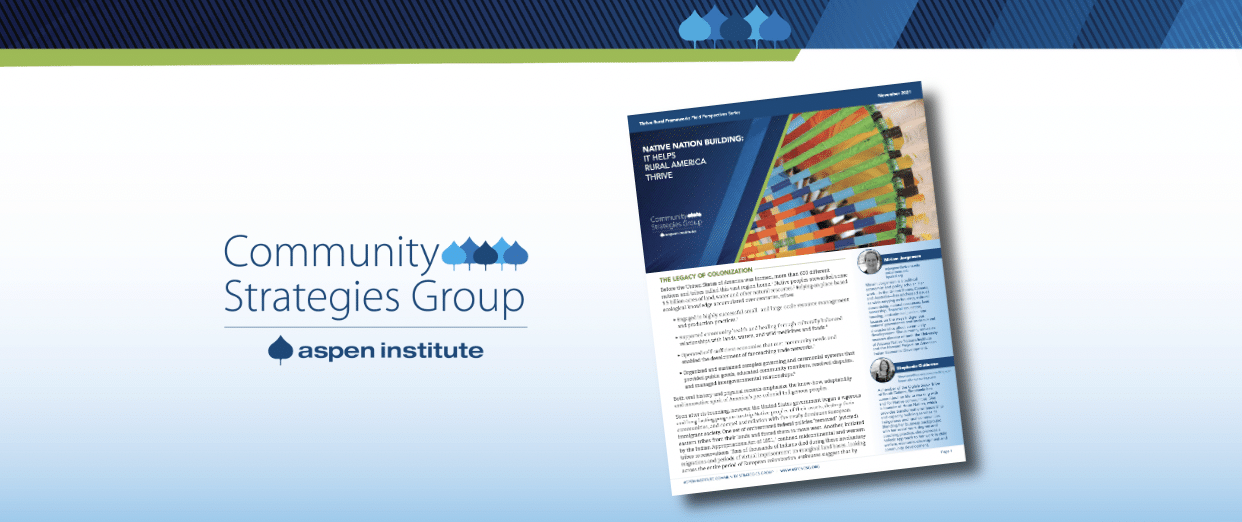
Native Nation Building: It Helps Rural America Thrive
Native nations and rural communities, working side-by-side and together, can strengthen the potential for thriving rural regions.

Weaving Health Equity and Rural Development Through Data
Learnings, insights, and resources to better understand where progress is needed on weaving health equity and rural development and what wins we all can celebrate.
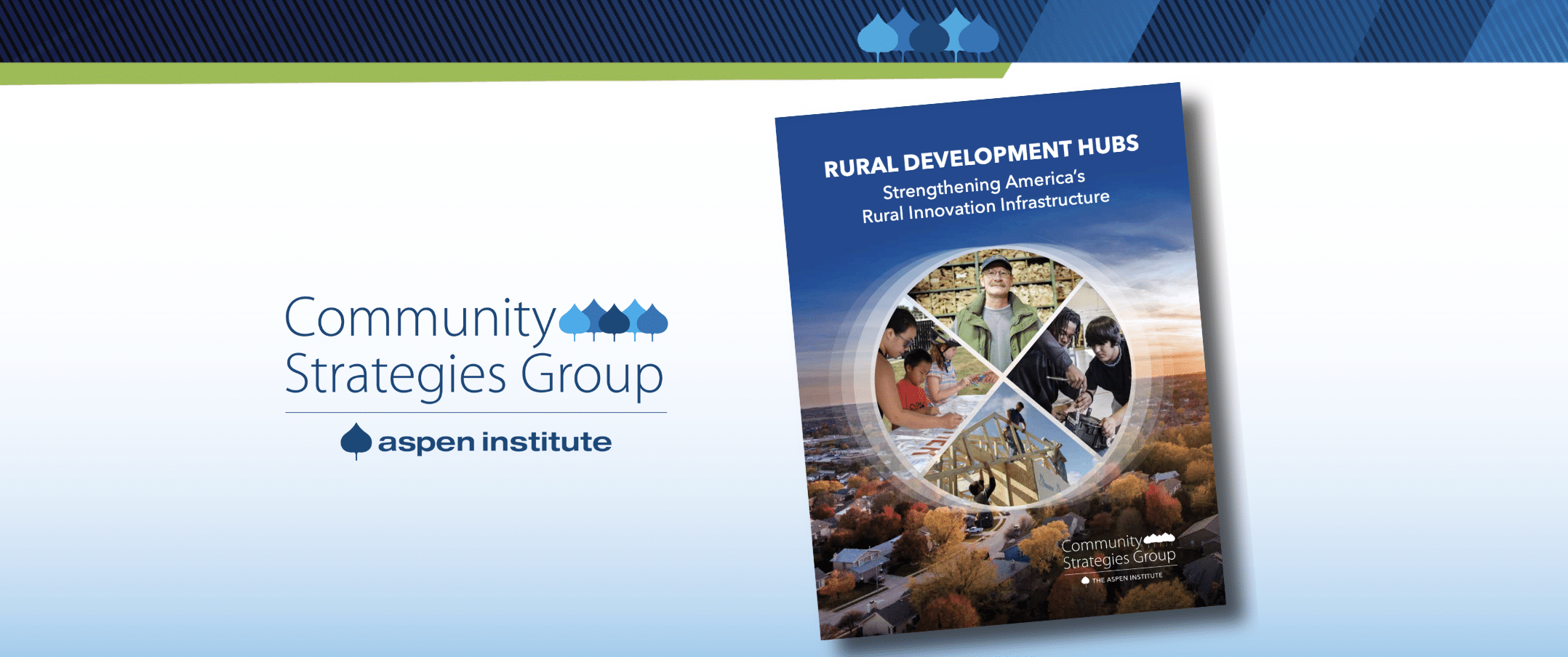
Rural Development Hubs Report
Rural Development Hubs are a specific set of intermediaries that are doing development differently in rural America. They are main players advancing an asset-based, wealth-building, approach to rural community and economic development.
Field Items

Rural Playbook
Playbook of rural hospitals pioneering creative partnerships with community development that pave the way for further investments in their communities.

TOWARDS BETTER RURAL FUTURES
ChangeLab Solutions
Toward Better Rural Futures aims to foster greater collaboration and alignment across local, regional, and state levels of government, equipping leaders with the tools and knowledge to fundamentally shift power, opportunity, and resources in order to create healthy rural places where everyone can thrive.

HOW DO RURAL COMMUNITIES IN THE US IMPLEMENT COLLECTIVE IMPACT?
FSG
FSG’s blog explores how Collective Impact—an approach where organizations from different sectors agree to solve a specific social problem by using a common agenda, aligning their efforts, and using common measures of success—has been implemented successfully across multiple types of geographies.

CAPTURING SHARED IMPACTS OF THE PARTNERS FOR RURAL TRANSFORMATION
Urban Institute
With a goal to transform the fortunes and futures of rural and Native communities, the Partners for Rural Transformation (PRT) centers community needs and hopes in its work.

EQUITABLE COMMUNITY DEVELOPMENT
Resources from RWJF on transforming neighborhoods to improve health and wellbeing.
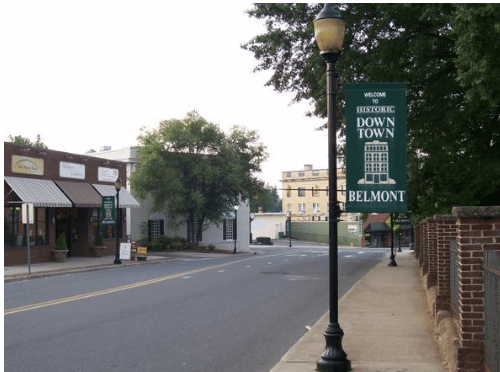
WORKING TOGETHER: A GUIDE TO COLLABORATION IN RURAL REVITALIZATION
N.C. Cooperative Extension
A handbook by NC State Extension explores coming together, staying together, and growing together as social mechanisms for successful rural revitalization collaborations and provide examples of their use in practice.

PHILANTHROPY MUST CHANGE SO COMMUNITY DEVELOPMENT CAN KEEP CHANGING FOR THE BETTER
Inside Philanthropy
Foundations should build on their success in supporting multisector, multifield collaborations to establish a consensus on development that centers race and people.
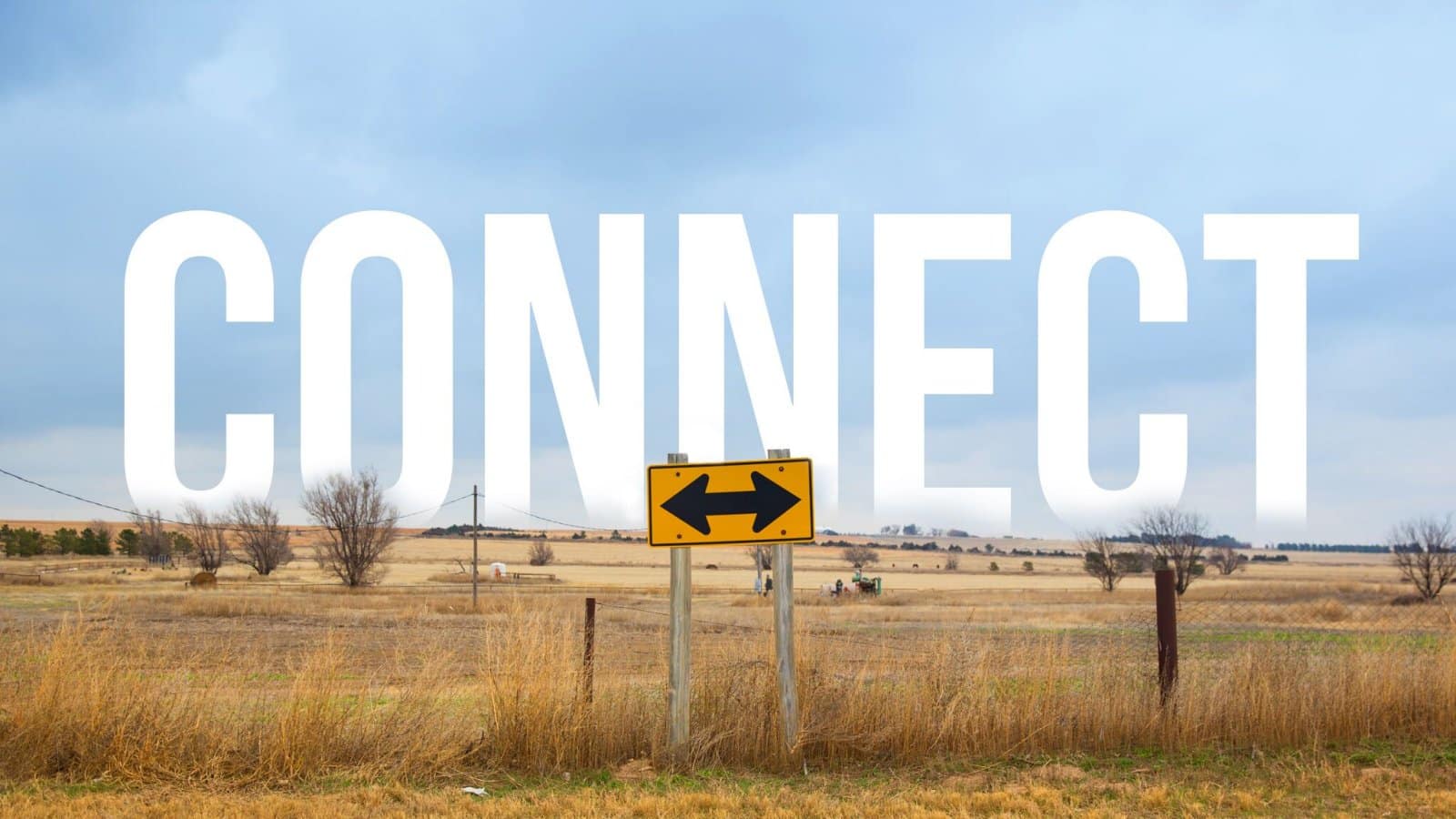
RWJF CULTURE OF HEALTH BLOG
Robert Wood Johnson Foundation
It’s time to think differently about investing in rural America and the way we approach health and equity across its diverse communities. New research and resources show the critical connection between health, rural community and economic development.
We see the framework as a living document, which necessarily must evolve over time, and we seek to expand the collective ownership of the Thrive Rural Framework among rural equity, opportunity, health, and prosperity ecosystem actors. Please share your insights with us about things the framework is missing or ways it should change.
